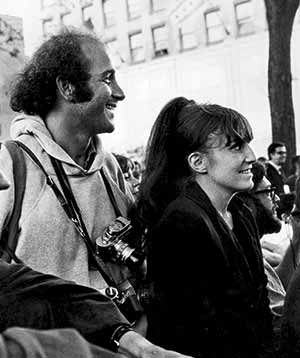The whole world’s watching,” activist Rennie Davis famously declared after antiwar demonstrators, police officers, National Guardsmen, and political delegates collided in Chicago in August 1968. What was supposed to be a showcase for this city — the hosting of the Democratic National Convention — turned into a black eye, as protesters were met with billy clubs and tear gas.
Among those watching was Al Lieberman. The 29-year-old teacher and aspiring photographer lived near Lincoln Park, which demonstrators were using as a staging area. He had just acquired a Leica and wanted to test out his camera. Over the course of a week, he ended up shooting almost 3,000 images of the political theater. Every night, he would go home, process the film, and study his negatives. “I couldn’t wait to see what I came back with,” he says.

The striking intimacy and rawness of his photographs, which have never before been published or exhibited, set them apart from more familiar, traditionally framed news images. Media coverage largely focused on clashes between protesters and the police. Lieberman caught some of that but also quieter moments. What he lacked in formal training, he made up for in chutzpah, mingling with activists and getting remarkably — at times uncomfortably — near his subjects. He didn’t carry a long zoom lens, he says: “I used my feet to get close.”
Though Lieberman wasn’t much of an antiwar protester himself (he had served a stateside stint in the army before Vietnam heated up), photographing the demonstrations changed him. He was drawn to the naive idealism he saw in the young activists and repulsed by the brutishness of the police. “I guess I was a hippie at the time, but I didn’t know it.”
He and his wife, Arleen, soon had enough of Chicago. Within about a year, they discarded most of their possessions, bought a Volkswagen bus, and hit the road. They rented a farm in central Wisconsin, then lived on a kibbutz in Israel, before returning to the States. Meanwhile, Lieberman’s photography began to gain notice; he received two grants from the National Endowment for the Arts. Eventually, he taught art at Bernard Zell Anshe Emet Day School on the North Side for more than 20 years.
Lieberman, 79, still owns the Leica. But it’s more of a souvenir now; he has switched to a digital camera. Most of the 80 rolls of film he shot during the protests had been relegated to a filing cabinet until the impending anniversary prompted him to revisit them — and make new discoveries. “That’s one thing I love about photography,” he says. “When you go back to see your pictures, they say something different as they age and you age.”


